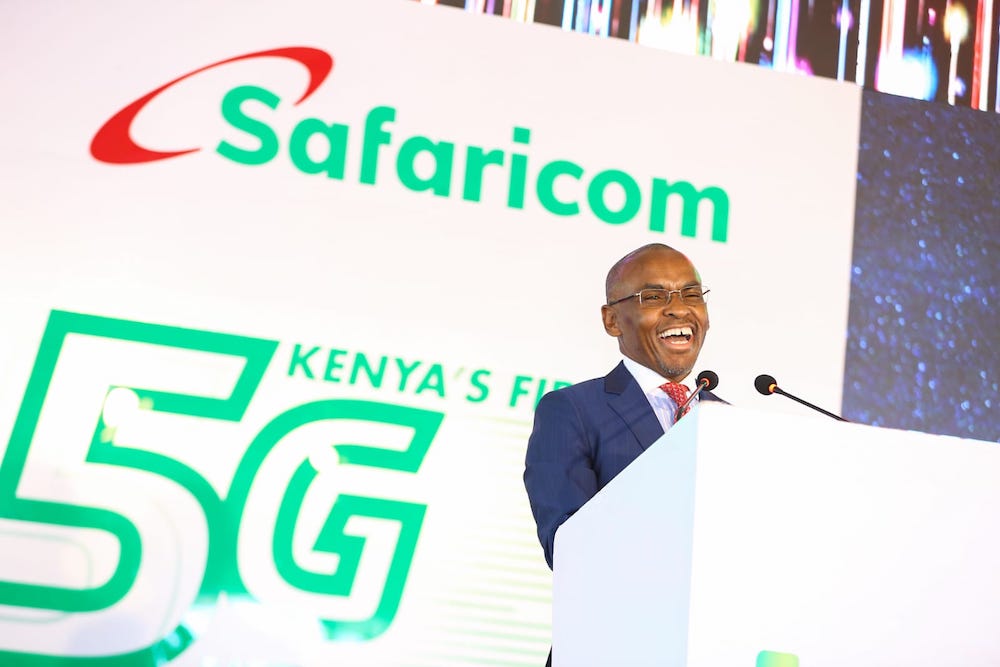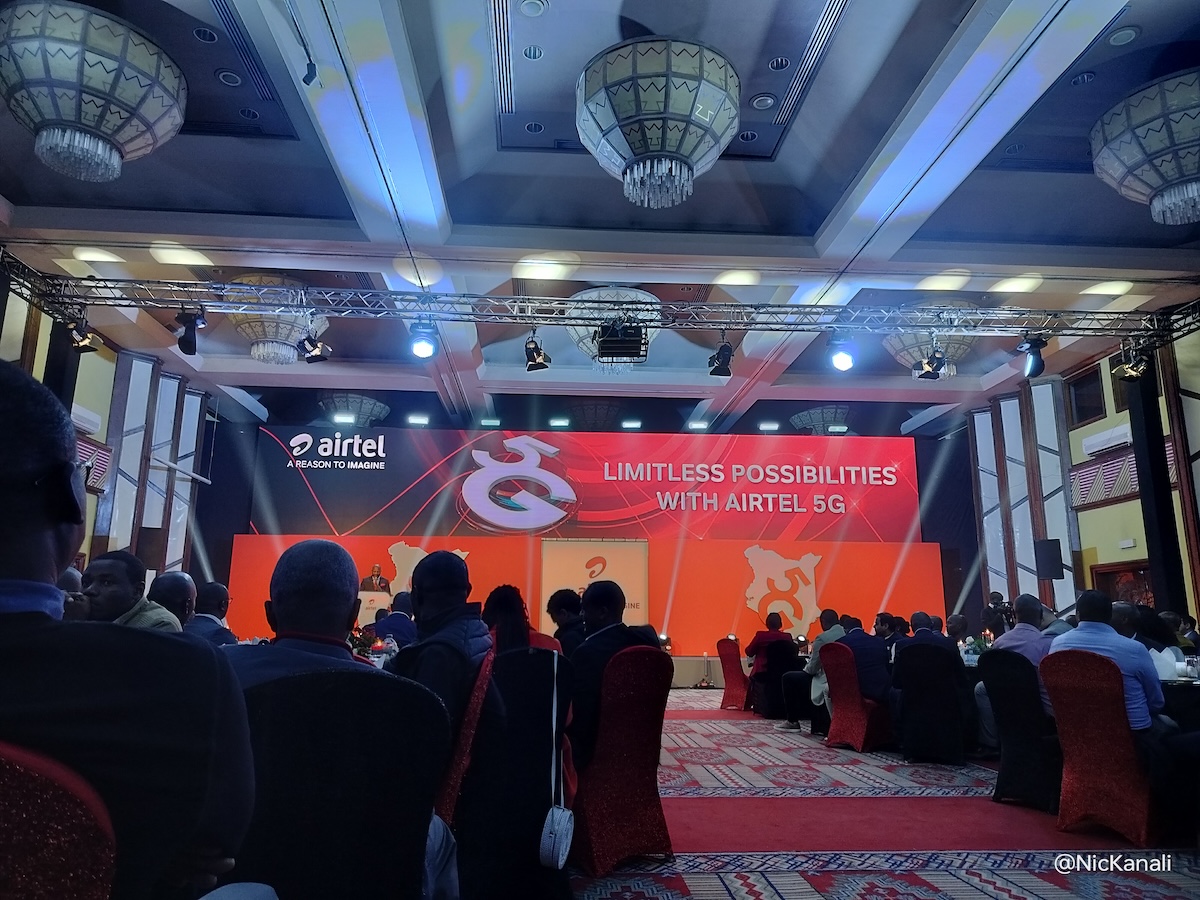5G in Kenya: More than 500k users now on the network but adoption is still slow

Kenya was among the first countries in Africa to launch the super-fast fifth-generation (5G) network. The country’s leading telco Safaricom first went commercial with the network in October last year after running trials for several months. It was then followed by Airtel, who rolled out the network almost a year later in July last year.
The latest statistics from the Communication Authority now reveal the number of 5G network users in the country has increased to 509,737 in the last three months to September 2023. This is a 13.3% increase representing 59,943 users from the 449,794 recorded by the authority as at June.
The stats point to an increase in demand for high internet speeds propelled by technological advancements in the country.
When Safaricom first launched the network, CEO Peter Ndegwa said it was the first step in empowering its retail and enterprise customers to start exploring new opportunities that 5G provides.
As of November 2023, Safaricom had increased its 5G coverage to select towns across 35 counties. New counties where 5G is now present include Bomet, Busia, Isiolo, Kitui, Mandera, Migori, Tharaka-Nithi, Trans Nzoia, Homa Bay, West Pokot, Embu, Kirinyaga, Muranga and Turkana.
They join other counties where Safaricom 5G is already present, including Nairobi, Kiambu, Mombasa, Kisumu, Uasin Gishu, Nakuru, Garissa, Kajiado, Kisii, Machakos, Kakamega, Kilifi, Siaya, Kericho, Kwale, Laikipia, Marsabit, Meru, Narok, Nyeri and Vihiga.
”By increasing 5G coverage, we are enhancing Kenya’s best internet network and empowering our customers to start exploring the possibilities of 5G,” Peter said.
Airtel on the other hand revealed plans to roll out an additional 100 5G sites across the country before the end of 2023. The operator said in November that the rollout of the new 5G sites will increase from 180 wards to 221 wards and, from 15 counties to 32 counties.
After the rollout, Airtel’s 5G presence will be in Nairobi, Kiambu, Mombasa, Nakuru, Uasin Gishu, Machakos, Kisumu, Kilifi, Kajiado, Kwale, Kakamega, Bomet, Embu, Homabay, Kericho, Kirinyaga, Laikipia, Meru, Busia, Garissa, Migori, Bungoma, Muranga, Kisii, Kitui, Makueni, Taita Taveta, Tana River, Nyamira, Nyeri, Siaya and Nyandarua.
Progressively, Airtel Kenya says it shall continue to roll out the 5G network sites to ensure the ultimate presence in all counties. This is to enable more Kenyan individuals, homes, and businesses to enjoy the limitless possibilities brought forth by the 5G network.
”The 5G network is more about faster internet, connecting people, businesses, and communities in once unimaginable ways. Our commitment to innovation and connectivity remains unwavering, and we’re excited to be a part of this new era of possibilities.” Said Airtel Kenya Managing Director, Ashish Malhotra.

Slow 5G Adoption in Africa
Across Africa, 5G adoption however remains low despite operators investing in expensive internet infrastructure. In fact, according to a report by Business Insider Africa ICT experts have projected only about 20 million African users would be using it in the next 5 years. This is a very small number for a continent with a population of over 1 billion people.
In countries like Kenya, the country’s leading telco Safaricom has previously cited the high cost of 5G devices as the major factor that had slowed down the deployment of 5G networks and sites. The average cost of a 5G-enabled phone is between $800-1000 although we have seen companies like Nokia, Samsung, Xiaomi, OPPO and Infinix bringing in 5G mid-range devices below that price tag.
According to Safaricom, there had to be a considerable mass of 5G-enabled handsets before rolling out more 5G sites for the consumer market.
Safaricom CEO Peter Ndegwa told local publisher Business Daily, “Until handsets that can receive 5G are at a sufficient scale from an individual mobile perspective, there isn’t a big need to have lots of sites that offer 5G. 5G-enabled devices are still very expensive and that’s one of the reasons why we are focusing more on the 4G side and leaving 5G to serve the homes versus your mobile internet,”.
In another interview with Kenya’s TechTrends Media, Airtel Kenya Managing Director shared the same sentiments noting that the high price of 5G-enabled phones is indeed a challenge when it comes to 5G adoption in Kenya.
In Sub-Saharan Africa, 3% of all connections will be on 5G by 2025 according to GSMA. Over this same period, GSMA notes that 4G adoption in the region will also double to 28%, compared to a global average of 57%. By the end of 2025, 5G will account for 3% of total mobile connections in the region.
To ensure these numbers are achieved, spectrum planning and policy is key. This policy will have a massive impact on the success of 5G and its deployment in the region. Governments and regulators, therefore, have the opportunity to make decisions to help make the most of the prospects 5G offers.
Follow us on Telegram, Twitter, and Facebook, or subscribe to our weekly newsletter to ensure you don’t miss out on any future updates. Send tips to info@techtrendske.co.ke.



